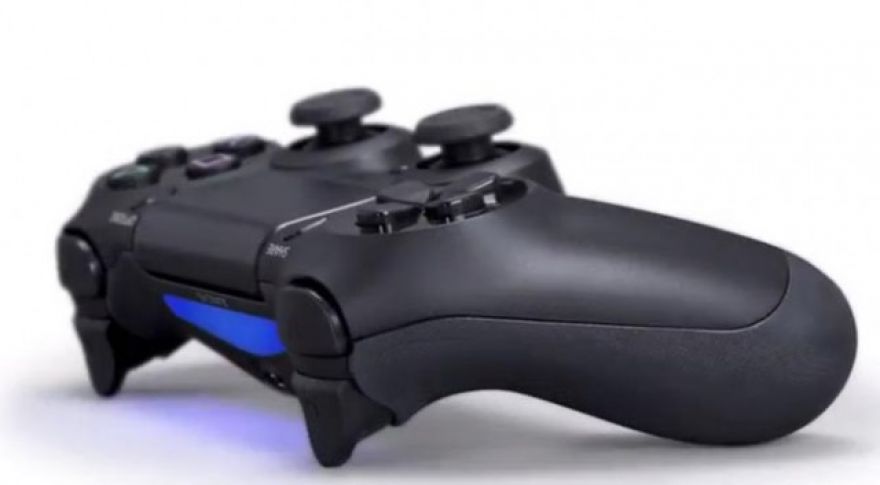
Sony Shares Fresh Details on PlayStation 5, Will Launch Holidays 2020
To date, Sony has kept pretty quiet about the PlayStation 5. Thanks to a new interview with PS5 system architect Mark Cerny, we can now confirm one detail — the machine will officially be known as the PlayStation 5. That’s not exactly unexpected, but given that companies occasionally like to toss a wrench in things, it’s nice to know. The launch date, as expected, is “Holidays 2020” — another expected-but-nice-to-have-confirmed data point.
The interview with Cerny, in Wired, touches on an array of details rather than being a deep technical discussion. He confirms that the PlayStation 5 has hardware-level support for ray tracing, not some kind of software-only solution.
Cerny spent time talking more about the PS5’s SSD, and how it improves performance. One way that game developers have compensated for the miserable performance of hard drives is to copy certain common resources over and over in the game code, to ensure that they are always available for sequential data loads. The nature of hard drives requires that the drive heads be positioned over the specific area of the platter that contains the data to be read, which means certain common elements that are used throughout a game (like streetlights, car models, and potentially certain other texture data) need to be stored alongside unique data (specific buildings or environmental maps) to ensure that everything loads in properly. SSDs don’t have this problem, which means game installations can be “de-duped” and remove these duplicated resources to save storage capacity.
It’s not clear how much disk space this saves, but it’ll probably help a bit. It’d be nice. Game installation sizes have tended to balloon every generation and the PS5 will use 100GB-capacity disks — implying that before long, we can all look forward to 100GB game installations. 1TB SSDs are starting to look cramped already.
Another new feature will be the ability to install games with much more granularity and to jump into games much more easily. If you only want to play the multiplayer component of a single/multi-player game, you’ll have the option to install just the section of the title you want to play. This may be a change intended to get players into games quicker, or it may reflect the fact that Sony wants to cut down on the effective size of game installs and give players more flexibility. SSDs still cost more than HDDs, and with 100GB game disks, Sony has good reason to cut game installation sizes.
Along with this increased flexibility in game installs comes adjustments to how games themselves are accessed. A new UI will allow you to jump into games with friends immediately, rather than booting up a title to see what friends are doing in it. “Even though it will be fairly fast to boot games, we don’t want the player to have to boot the game, see what’s up, boot the game, see what’s up,” Cerny says. “Multiplayer game servers will provide the console with the set of joinable activities in real time. Single-player games will provide information like what missions you could do and what rewards you might receive for completing them—and all of those choices will be visible in the UI. As a player you just jump right into whatever you like.”
Increased Haptic Feedback
Another major change with the PS5 is coming with changes to how haptics work in the Dual Shock 5 controller. It now includes adaptive triggers that can offer varying levels of resistance to make shooting a bow and arrow or pulling a trigger require more resistance, or to make two different guns feel different to use. Haptic feedback capability has also been enhanced, and the controller can use haptics to simulate multiple types of surfaces or environments rather than simply providing generic ‘rumble’ at pre-defined moments. Wired spent time with the controller and confirmed that it can make different sorts of surfaces feel distinct. Platformers could be punched up a notch with these kinds of options, to the joy of ice-level lovers everywhere and the hatred of everyone else.
Render by
Incidentally, the PS5 devkit reportedly looks like images Gizmodo saw last week. A render based on the images, by LetsGoDigital, is shown below. Whether or not this reflects the final design of the machine isn’t something we know yet.
The arguments in favor of the PS5, at this point, don’t boil down to any one innovation, but in the way those innovations — higher storage performance, new UI flexibility, and new methods of haptic feedback — will be collectively used to create new kinds of experiences. Details like price and formal specs are information both Microsoft and Sony are sitting on at this point, for obvious reasons. With one more holiday season before the new hardware drops, neither company wants to risk wrecking previous-gen sales before it’s time to put new hardware out.
I’m going to be interested to see what comes of the new console generation. The move from GCN 1.0 to an RDNA-derived GPU should deliver some significant performance uplift, but I’m more curious to see what developers can do with the increased CPU resources. The PS4 and Xbox One were both based on AMD’s Jaguar, but while that chip was a plucky mobile contender in 2013, it was weaker than the “big-core” x86 CPUs that were then on the market. An eight-core Ryzen-based CPU will offer far higher performance than any Jaguar could, even if we assume a relatively low clock to keep power consumption down. The combination of an updated GPU and a significant boost to CPU performance should hopefully allow these new consoles to distance themselves from the previous generation.
Now Read: